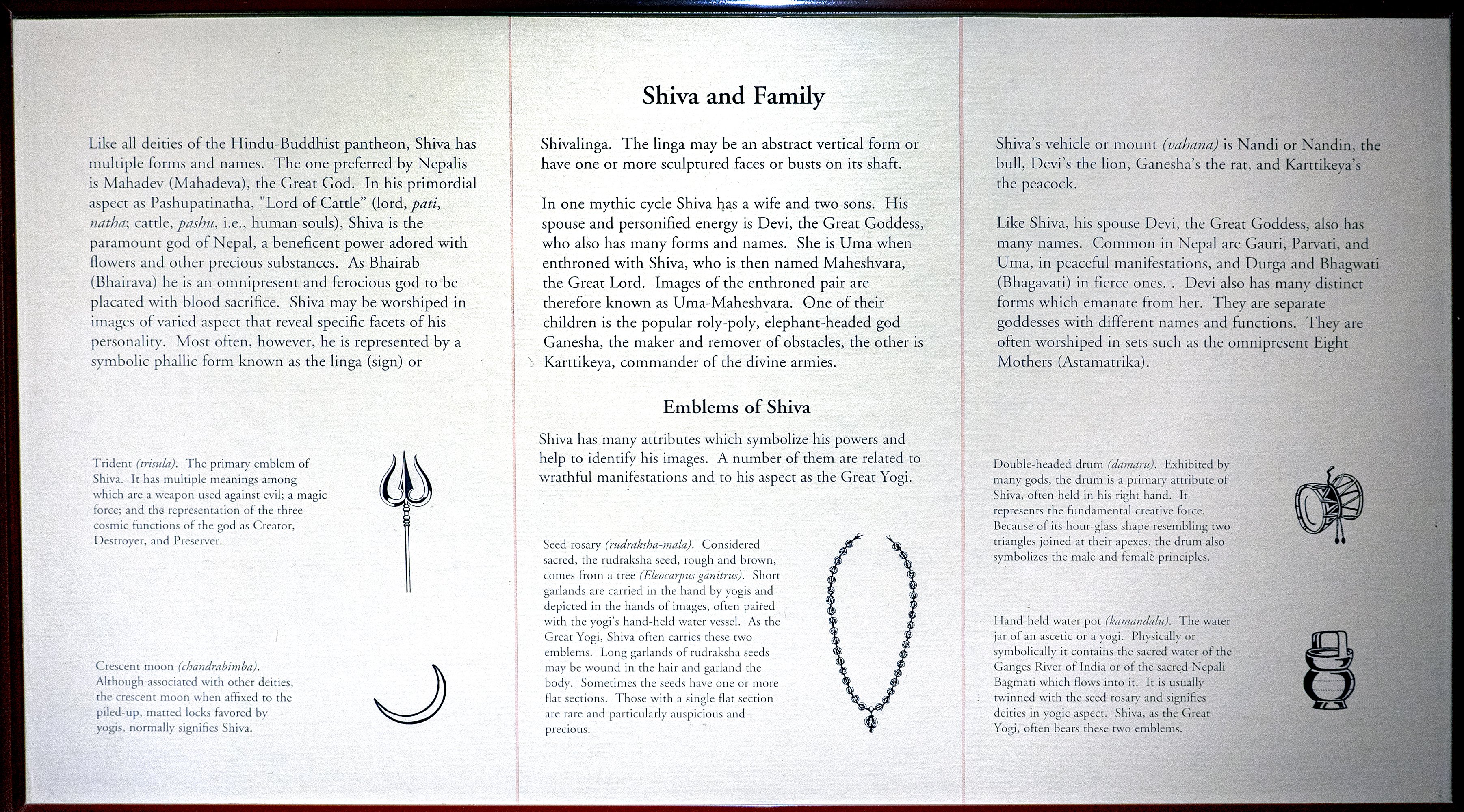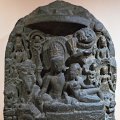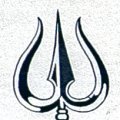Patan Museum (Nepal): photo 143
Photo 143 of 212 in Gallery: Patan Museum (Nepal)

Image title: Shiva and Family
Description of the photo
Like all deities of the Hindu-Buddhist pantheon, Shiva has multiple forms and names. The one preferred by Nepalis is Mahadev (Mahadeva), the Great God. In his primordial aspect as Pashupatinatha, “Lord of Cattle” (lord, part, natha; cattle, pashu, i.e., human souls), Shiva is the paramount god of Nepal, a beneficent power adored with flowers and other precious substances. As Bhairab (Bhairava) he is an omnipresent and ferocious god to be placated with blood sacrifice. Shiva may be worshiped in images of varied aspect that reveal specific facets of his personality. Most often, however, he is represented by a symbolic phallic form known as the linga (sign) or Shivalinga. The linga may be an abstract vertical form or have one or more sculptured faces or busts on its shaft.
In one mythic cycle Shiva has a wife and two sons. His spouse and personified energy is Devi, the Great Goddess, who also has many forms and names. She is Uma when enthroned with Shiva, who is then named Maheshvara, the Great Lord. Images of the enthroned pair are therefore known as Uma-Maheshvara. One of their children is the popular roly-poly, elephant-headed god Ganesha, the maker and remover of obstacles, the other is Karttikeya, commander of the divine armies.
Shiva’s vehicle or mount (vahana) is Nandi or Nandin, the bull, Devi’s the lion, Ganesha’s the rat, and Karttikeya’s the peacock.
Like Shiva, his spouse Devi, the Great Goddess, also has many names. Common in Nepal are Gauri, Parvati, and Uma, in peaceful manifestations, and Durga and Bhagwati (Bhagavati) in fierce ones. . Devi also has many distinct forms which emanate from her. They are separate goddesses with different names and functions. They are often worshiped in sets such as the omnipresent Eight Mothers (Astamatrika).
Gallery information:
The Patan Museum is located on the Durbar square of Patan (Lalitpur/Lalitapura, Kathmandu, Nepal) which is associated Keshav Narayan Chowk (Keshavnarayan)—a form of Lord Vishnu. Being listed as a World Heritage Site, the whole of Durbar square is filled with exquisite temples, sculptures and other ancient structures, of which the ancient history history can be traced to the Malla Kings of Lalitpur. It is an important site for both Buddhism and Hinduism.
Photo details:
Date: 2019-12-02
Camera: SONY ILCE-6400
Exposure: 1/160
Aperture: f/4
ISO: 500
Focal length: 18mm
High resolution:
Download file
Size: 4.24 MB
Resolution: 3604 x 2000
© Photograph by Gabe Hiemstra.
License: CC BY-NC-ND 4.0

